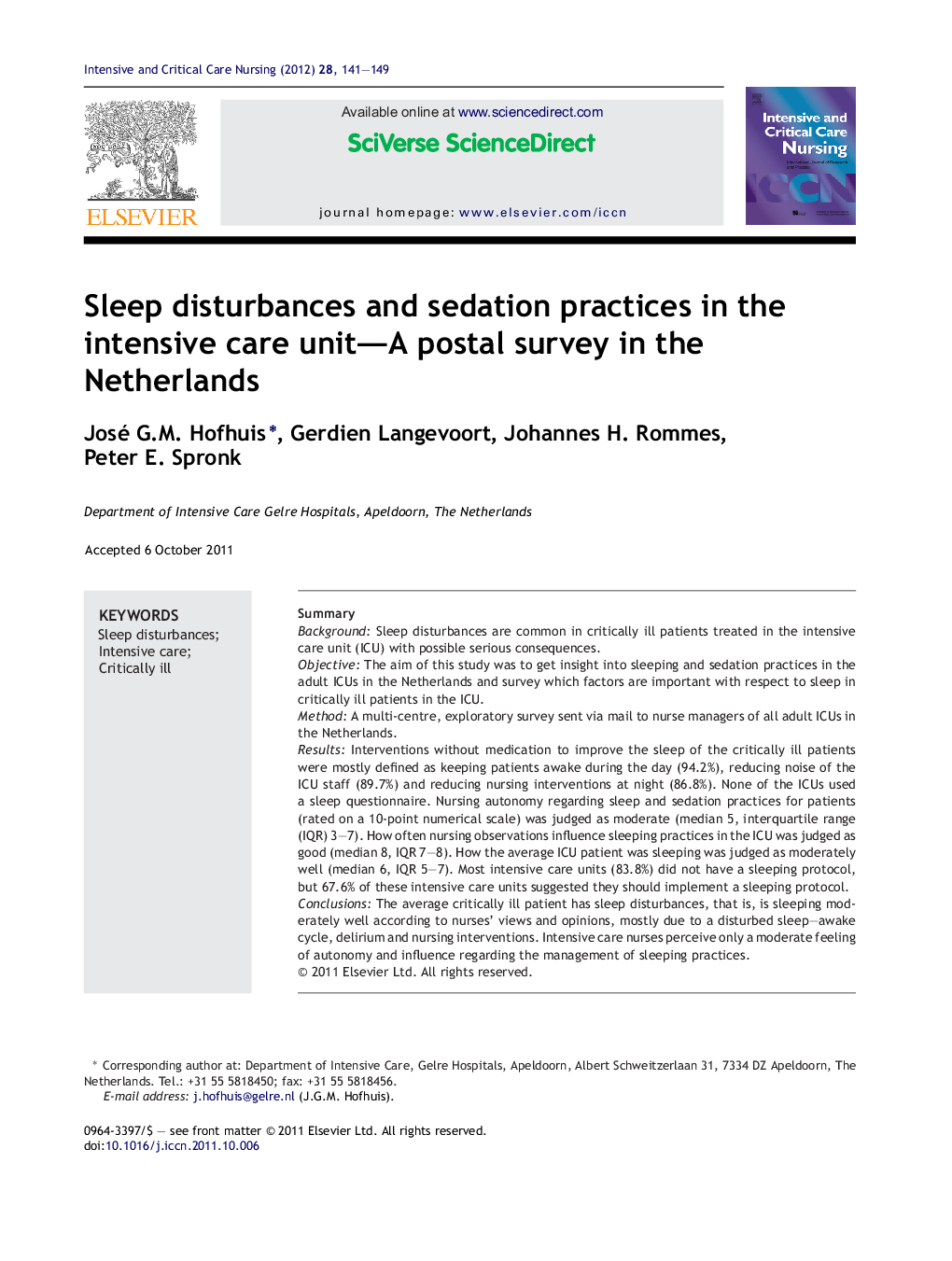| Article ID | Journal | Published Year | Pages | File Type |
|---|---|---|---|---|
| 2652306 | Intensive and Critical Care Nursing | 2012 | 9 Pages |
SummaryBackgroundSleep disturbances are common in critically ill patients treated in the intensive care unit (ICU) with possible serious consequences.ObjectiveThe aim of this study was to get insight into sleeping and sedation practices in the adult ICUs in the Netherlands and survey which factors are important with respect to sleep in critically ill patients in the ICU.MethodA multi-centre, exploratory survey sent via mail to nurse managers of all adult ICUs in the Netherlands.ResultsInterventions without medication to improve the sleep of the critically ill patients were mostly defined as keeping patients awake during the day (94.2%), reducing noise of the ICU staff (89.7%) and reducing nursing interventions at night (86.8%). None of the ICUs used a sleep questionnaire. Nursing autonomy regarding sleep and sedation practices for patients (rated on a 10-point numerical scale) was judged as moderate (median 5, interquartile range (IQR) 3–7). How often nursing observations influence sleeping practices in the ICU was judged as good (median 8, IQR 7–8). How the average ICU patient was sleeping was judged as moderately well (median 6, IQR 5–7). Most intensive care units (83.8%) did not have a sleeping protocol, but 67.6% of these intensive care units suggested they should implement a sleeping protocol.ConclusionsThe average critically ill patient has sleep disturbances, that is, is sleeping moderately well according to nurses’ views and opinions, mostly due to a disturbed sleep–awake cycle, delirium and nursing interventions. Intensive care nurses perceive only a moderate feeling of autonomy and influence regarding the management of sleeping practices.
